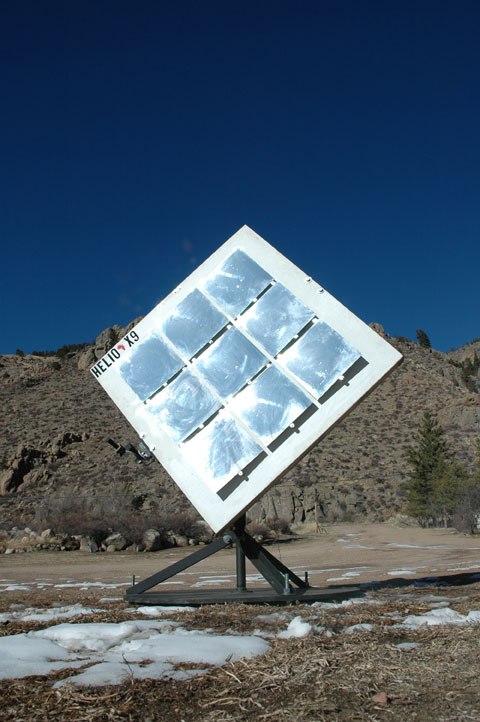
9 sq-ft research model.
Visit "Applications"
to see some of our experiments. |
The goal was to develop a
target-axis heliostat built with common construction materials and simple solar tracking electronics capable of sub-degree accuracy.
There are advantages and disadvantages of
this type of autonomous heliostat design.
Advantages:
- Aiming is simple, just point the heliostat toward the target.
- Leveling is not required.
- Simple electronic design. (No encoders, microprocessors,
or computers.)
- Inexpensive DC motors.
- Low parasitic power consumption. (Approximately 4 milliamps.)
- Wide power supply range (9 - 36 VDC)
Disadvantages:
- Optical sensor will not work if anything gets between it and the sun (clouds). It will start working as soon as the sun is visible again.
- Rotary actuators can be quite expensive.
- Spot drift during overcast periods (***WARNING*** this
is a major safety concern with heliostats especially if they are optically
actuated. If the sun goes behind the clouds or the heliostat malfunctions
the focal spot will drift off target. For low solar concentrations and
lighting applications this is usually not a problem, but imagine if you
had 20 heliostats set up ... anything in the path of the solar spot while
it is off target or is moving back to the target could get VERY HOT and
possibly CATCH ON FIRE!
Screening and blinding are two possible ways to address this problem.)
 Click to play a time lapse movie of the heliostat tracking the sun for about six hours. Click to play a time lapse movie of the heliostat tracking the sun for about six hours.
|

